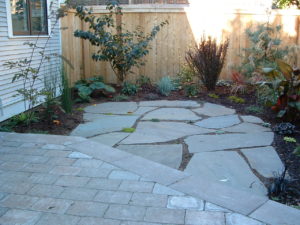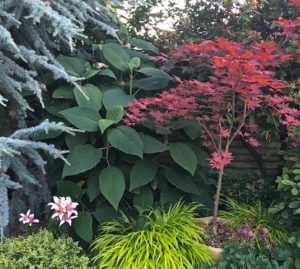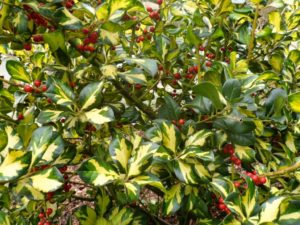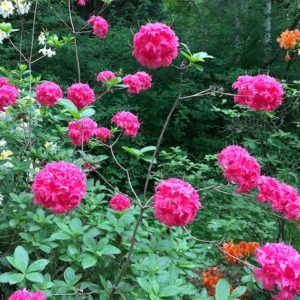
Tumbled concrete pavers and natural stone by michaelmuro.com. Greenlake, Seattle WA
NOTE: The term “hardscaping” describes any type of hard surface impressed upon the landscape: patios, driveways, walkways, and more.
Successful hardscaping projects take into consideration both the practical and the aesthetic. A straight walkway might be the quickest route to your front door, but a curved walkway creates a pleasing route through the landscape. A patio at the foot of the back garden is nice, but not if that’s where water drains and pools.
I advise clients to take these factors into consideration when planning patios and walkways:
Drainage
Any significant drainage, erosion or moisture problems on your site should be addressed before, or as part of, your landscaping project. You may need to establish a drain field or other solution.
As part of your planning, learn about “permeable paving.” The term refers to a range of sustainable materials and techniques for creating pavements that have a base and sub-base allow storm water to drain through the joints between pavers. In addition to reducing runoff, many paving systems effectively filter pollutants, preventing them from getting into the groundwater. In many cases, building codes dictate the amount of permeable surfaces that must be preserved on your property.
You want at least part of any hardscape area to “perk” in order to control where and how run-off drains into the surrounding areas of your property, adjoining land, or the street. Your best bets for good drainage are pavers or natural stone. Most pavers allow moisture to drain through the spaces between them evenly without creating much run-off. Cement or aggregate are much less permeable. If you anticipate drainage issues, permeable or natural stone may be your best option for patios and walkways.
Design and aesthetics
What fits your space, the exterior design of your home, and the overall setting of your property?
You might be surprised at how creative you can get. A Japanese garden may work with a traditional Tudor house, and professional designers can develop ways to merge themes that might otherwise seem incompatible. Considerations include: colors, the size and shape of the space, and most importantly, how your outdoor space will be used.
Budget
Your project costs will depend on several factors. These include the extent of leveling your site requires and the materials selected for the hardscaping. Pavers are often the most cost-effective, followed by some concrete and natural stone treatments. Be sure to get a good idea of budget ranges during the design process.
Next steps
Experienced landscape designers have worked with the issues of drainage, aesthetics, and budget many times. They know what’s out there and can help you make informed choices.
Please contact us if you’d like to find out more about hardscaping and other landscape design projects.
 Witch hazel, Hellebore and Sweet Box are blooming
Witch hazel, Hellebore and Sweet Box are blooming








 on twiggy stems that jut out at an angle from main branches. When not in bloom, the ‘Homebush ‘is understated — perfect when situated behind lower growing Rhododendrons or evergreen plants with
on twiggy stems that jut out at an angle from main branches. When not in bloom, the ‘Homebush ‘is understated — perfect when situated behind lower growing Rhododendrons or evergreen plants with